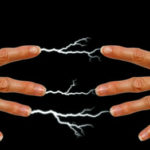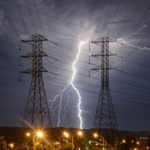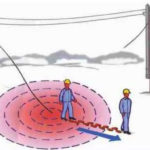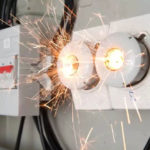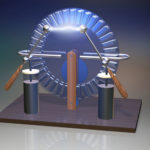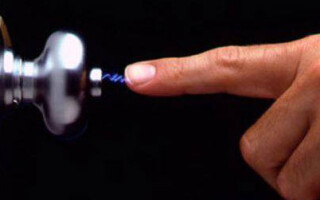Everyone is familiar with the concept of static electricity from school physics course. Static electricity occurs when charges appear on conductors, surfaces of various objects. They appear as a result of friction arising from the contact of objects.
Contents
What is static electricity?
All substances consist of atoms. An atom contains a nucleus, around which electrons and protons are arranged in equal numbers. They are capable of moving from one atom to another. As they move, negative and positive ions are formed. Their imbalance results in static. The static charge of protons and electrons in an atom is the same, but has different polarities.
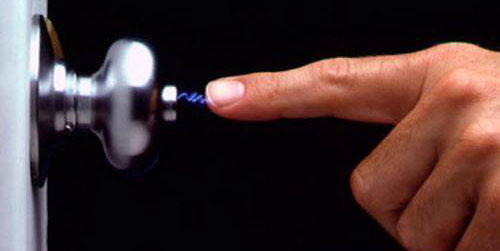
Static appears in everyday life. Static discharge can occur at low currents but high voltages. There is no danger to people in this case, but the discharge is dangerous to electrical appliances. During discharge, microprocessors, transistors and other circuit elements suffer.
Causes of static electricity
Statics arise from the following conditions:
- Contact or distance between two different materials;
- Sudden changes in temperature;
- Radiation, UV radiation, X-rays;
- operation of paper-cutting machines and cutting machines.
Static often occurs during or before a thunderstorm. Thunderstorm clouds generate static electricity as they move through moisture-laden air. Discharge occurs between the cloud and the ground, between individual clouds. Lightning rods help conduct the charge into the ground. Lightning clouds create an electrical potential on metal objects, causing a slight shock when you touch them. The shock is not dangerous to humans, but a powerful spark can cause some objects to catch fire.
Every resident has repeatedly heard the crackling sound that can be heard when removing clothing, the shock of touching a car. This is a consequence of the appearance of static. Electric charges can be felt when cutting paper, combing hair, pouring gasoline. Free charges accompany humans everywhere. The use of various electrical devices increases their occurrence. They occur when shoveling and crushing solid products, pumping or overflowing flammable liquids, transporting them in tanks, and winding paper, fabric, and film.
Charge appears as a result of electrical induction. Large electrical charges are created on the metal bodies of cars during dry seasons. A television screen or computer monitor is capable of being charged by the beam created in an electron beam tube.
Harms and Benefits of Statistical Electricity
Many scientists and inventors tried to use static charge. Cumbersome machines were created, the usefulness of which was low. The scientists' discovery of corona discharge turned out to be useful. It is widely used in industry. Electrostatic charge is used to paint complex surfaces, clean gases from impurities. All this is good, but there are numerous problems. Electric shocks can be very powerful. They can sometimes hit a person. This happens both at home and in the workplace.
The harm of static electricity is seen in shocks of varying power when taking off a synthetic sweater, getting out of a car, turning on and off a food processor and vacuum cleaner, a laptop and a microwave oven. These shocks can be harmful.
Static electricity is generated, which affects the cardiovascular and nervous systems. It should be protected from. Man himself is also often a carrier of charges. Electrical devices become electrified when they come into contact with their surfaces. If it is a measuring and control device, it may end up in failure.
The discharge current brought by man destroys the connections with its heat, breaks the tracks of microcircuits, destroys the film of field-effect transistors. As a result, the circuit becomes unusable. Most often this does not happen immediately, but at any stage during the tool's operation.
In factories that process paper, plastics, textiles, the materials often do not behave correctly. They stick to each other, stick to different types of equipment, repel, collect a lot of dust on themselves, wind up incorrectly on spools or reels. The culprit is the creation of static electricity. Two charges of equal polarity repel each other. Others, one of which is positively charged and the other negatively charged, are attracted. Charged materials behave the same way.
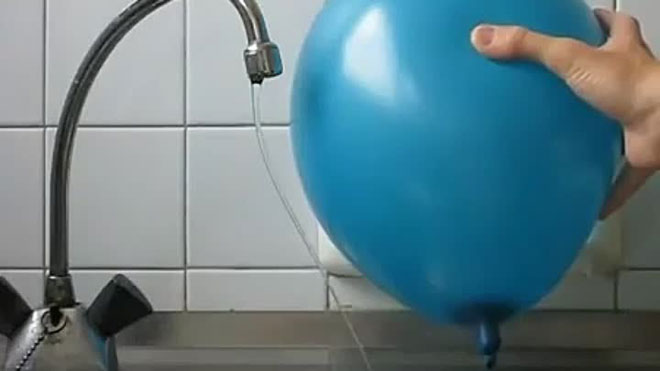
In print shops and other places where flammable solvents are used in the workplace, a fire may occur. This occurs when the operator is wearing shoes with conductive soles and the equipment is not properly grounded. The potential for fire depends on the following factors:
- type of discharge;
- type of discharge; the power of the discharge;
- the source of the static discharge
- energy;
- presence of solvents or other flammable liquids nearby.
Discharges can be sparks, brush discharges, sliding brush discharges. Spark discharges emanate from a person. Carpal discharges occur on sharpened parts of equipment. Its energy is so small that it practically does not cause a fire hazard. Sliding brush discharge occurs on synthetic sheets as well as on roll materials with different charges on each side of the web. It poses the same danger as a spark discharge.
The striking ability is a major issue for safety professionals. If a person holds on to the reel and is himself in the voltage zone, his body will also be charged. To remove the charge, you must always touch the ground or grounded equipment. Only then will the charge go into the ground. But the person will get a strong or weak electric shock. This results in reflexive movements which sometimes result in injury.
Prolonged stay in the charged area leads to irritability, loss of appetite, sleep disorders.
Dust from the production room is removed by ventilation. It accumulates in the pipes and can be ignited by a statistical spark discharge.
How to remove static electricity from a person
The simplest way to protect against it is to ground equipment. In industrial environments, screens and other devices are used for this purpose. Special solvents and additives are used in liquids. Antistatic solutions are actively used. These are substances with low molecular weight. Molecules in antistatic are easily moved and react with the moisture in the air. Due to this characteristic, statics are removed from the person.
If the operator has shoes with conductive soles, he must always touch the ground. Then the departure of the static current into the ground cannot be stopped, but the person will receive a strong or weak shock. We feel the effects of static current after walking on carpets and rugs. Drivers get electric shocks when getting out of a car. It is easy to get rid of this problem: just touch the door with your hand while sitting still. The charge will drain into the ground.
Conducting ionization is a good idea. This is done with an anti-static bar. It has many needles of special alloys. Under the action of current of 4-7 kV, the air around is decomposed into ions. Air knives are also used. They are an antistatic bar through which air is blown and cleans the surface. Static charges are actively generated by splashing liquids that have dielectric properties. Therefore, to reduce the effect of electrons, a falling jet should not be allowed.
It is advisable to use anti-static linoleum on the floor and to clean more frequently with household cleaners. In factories associated with the processing of fabrics or paper, the problem of getting rid of static is solved by wetting the materials. Increased humidity prevents the accumulation of harmful electricity.
To remove static, it is necessary to:
- humidify the air in the room;
- treat carpets and rugs with antistatic agents;
- wipe car seats and rooms with antistatic wipes;
- Moisturize your skin more often;
- Avoid synthetic clothing;
- Wear shoes with leather soles;
- prevent static in laundry after washing.
Indoor flowers, boiling kettles, and special appliances are good humidifiers. Antistatic compounds are sold in household supply stores. They are sprayed over the carpet. You can make your own antistatic. To do this, take the fabric softener (1 cap), pour into a bottle. Then the container is filled with clean water, which is sprinkled over the surface of the carpet. Wipes moistened with antistatic neutralize the charges on the seat upholstery.
Moisturize skin with lotion after showering. Hands are wiped several times a day. Clothing should be changed to natural. If they are charged, treat with antistatic agents. It is recommended to wear shoes with leather soles or walk around the house barefoot. It is advisable to pour ¼ cup of baking soda (baking soda) on the clothes before washing. It relieves electricity and softens the fabric. When rinsing the laundry, you can add vinegar (¼ cup) to the machine. It is better to dry the laundry in the fresh air.
All of the above measures help neutralize static problems.
Related articles:
